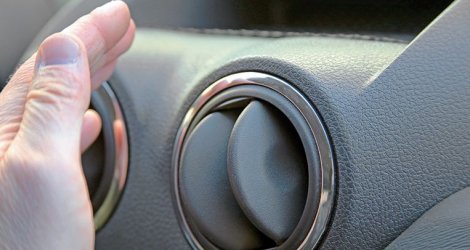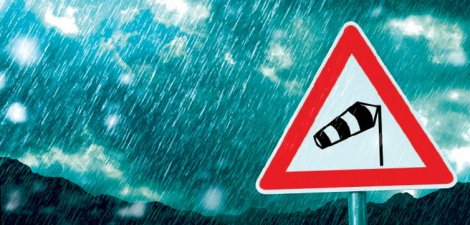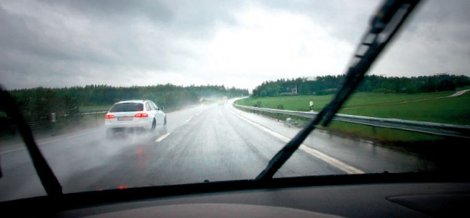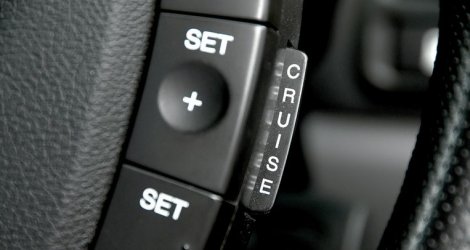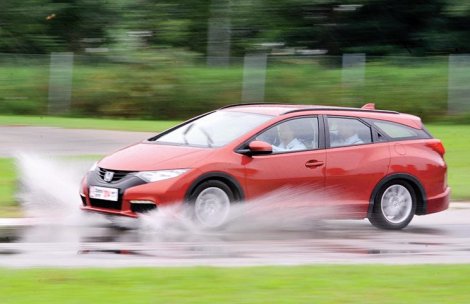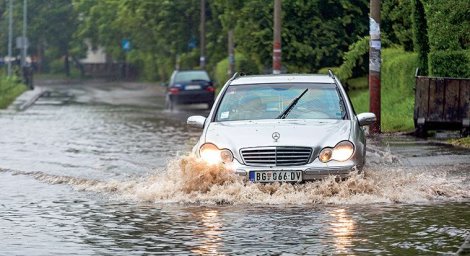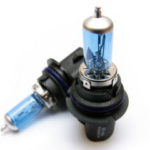Driving in the rain
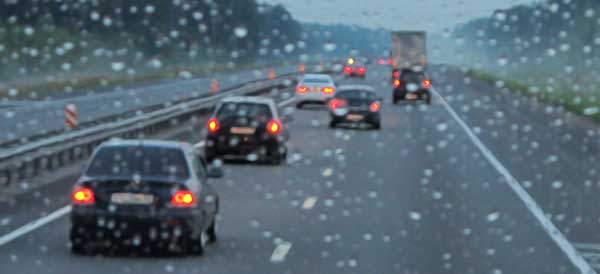
Rain
The inclement weather in the form of huge amounts of rain made the drivers seriously wonder if they were going to start a downpour at all because the question is how and when the downpour will end. Ours is to remind you of a few essential things that can make it easier for you to drizzle.
Before you start, direct the ventilation to the windshield, because when it rains, the windows blur almost in a second. You don't want to mess with the buttons the moment you no longer see in front of you.
Strong wind
The wind can shake your vehicle and even change your direction, especially on bridges. Hold the steering wheel firmly in your hands and be aware of other road users in these conditions, especially motorcyclists and taller flat-sided vehicles.
Drive more slowly
When it is raining, you keep twice the distance from the vehicle in front, not only because of the braking distance, which is much longer on a wet road, but in this way you give yourself space so that the vehicles in front do not spray and thus reduce your visibility ahead. This is especially true if there is a larger vehicle in front of you.
Without "cross controls"
If you have cruise control, do not use it in the wet, as aquaplaning can be a problem. Look ahead and plan your ride so you can brake, accelerate or turn slightly. Sudden movements will make the vehicle unstable.
When streaming
With light signals, warn the driver you are overtaking and turn on the wipers at their strongest before starting this operation.
How to avoid aquaplaning
Aquaplaning is a phenomenon that occurs when tires lose contact with the ground, ie when a thin layer of water is found between the tread of the tire and the road. At that point, the driver loses control of the vehicle. This phenomenon occurs only when driving faster than necessary. In addition, the risk of aquaplaning is higher if our tires are "bald". Namely, if this has already happened to you when you were driving a little faster in the rain, then you know how unpleasant this feeling is. The correct response in the case of aquaplaning is to immediately release your foot from the accelerator pedal, but never press the brake or turn the steering wheel. When you release the throttle, the vehicle will slow down and the tires will start to puncture through a thin layer of water and traction will be enabled again. Also, you need to hold the steering wheel firmly in your hands so that the car does not change direction. This is advice on how to cope if aquaplaning occurs, but prevention is the best solution because this phenomenon can be avoided. Do not drive on old and worn tires, as they do not have the ability to drain water through tread grooves. Simply, the deeper the pattern on the tire, the easier and faster the water will drain. Also, aquaplaning can be avoided if you do not drive fast in the rain.
IN THE FLOOD:
In the event of severe showers and floods, consider taking the road at all. If you still have to, and it involves driving through deeper water, use the following tips:
- Drive along the highest part of the road and do not move if your vehicle encounters you
–Leave space not to splash on other cars or pedestrians
–If you don't see where to go to get out of the water, such as when you turn into a flooded street, think about going there at all.
- When driving through deep water, never remove your foot from the accelerator pedal as this may allow the water to penetrate the exhaust
–When you get out of the water, dry your brakes by gently pushing them sideways for just a few seconds, of course, if no one comes close behind you
Taken from: vesti.mojauto.rs
Recommendation of similar texts:

Hi there, I am Mladen and I am an auto enthusiast. I started this blog years ago to help like minded people share information about latest cars, car servicing ideas, used car info, exotic cars, and auto technology. You will find helpful articles and videos on a wide variety of cars - Audi, Mercedes, Toyota, Porsche, Volvo, BMW and much more. Ping us if you have anything cool to share on latest cars or on how to make older cars more efficient, or just want to say hi!

